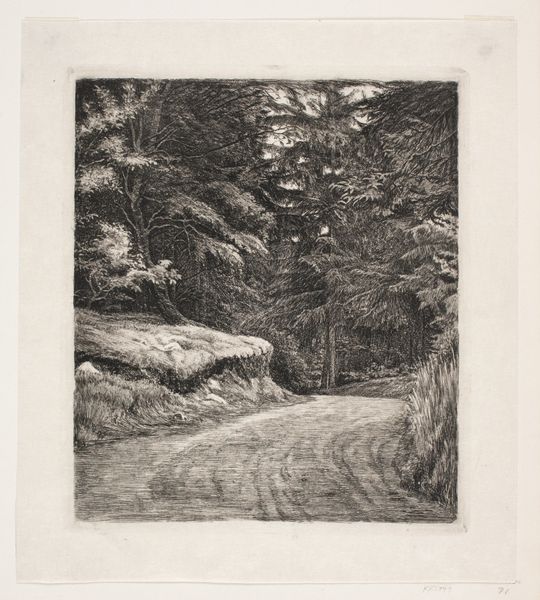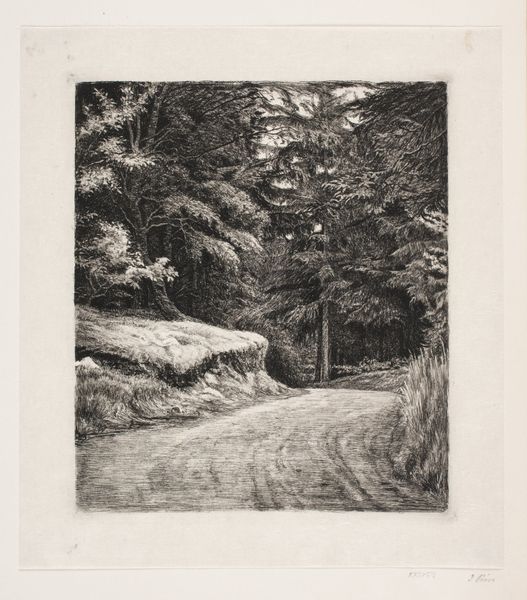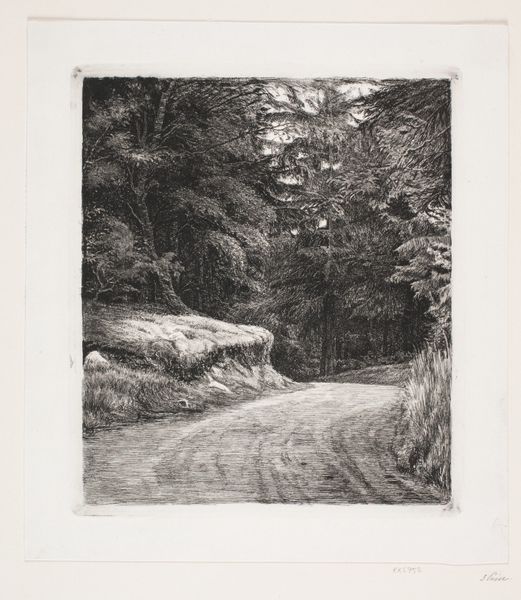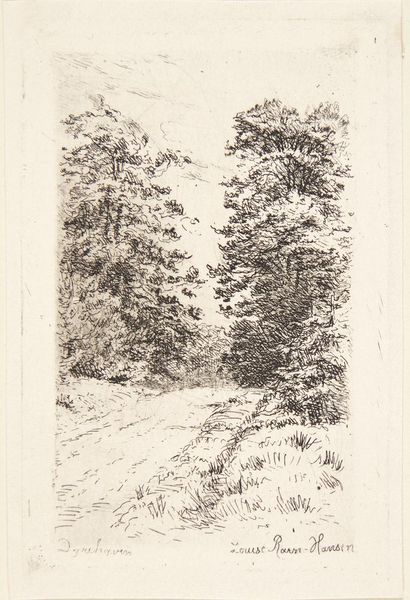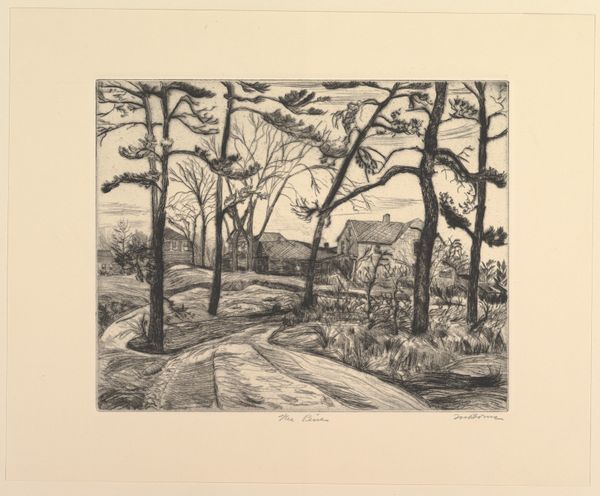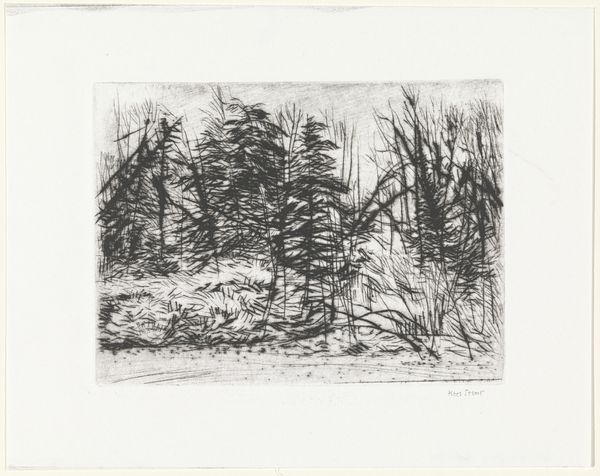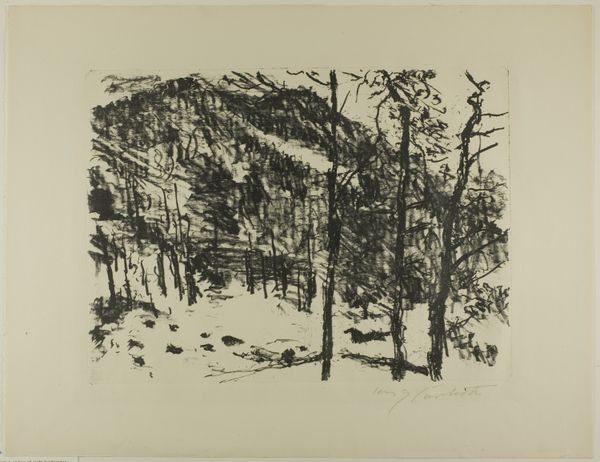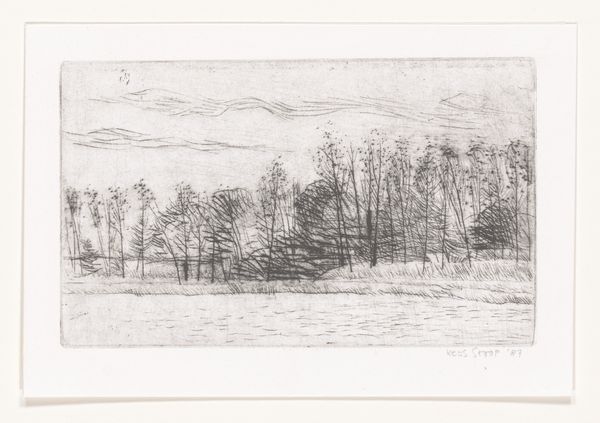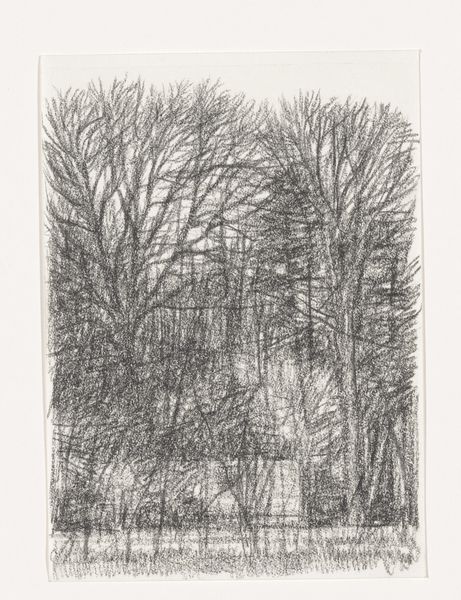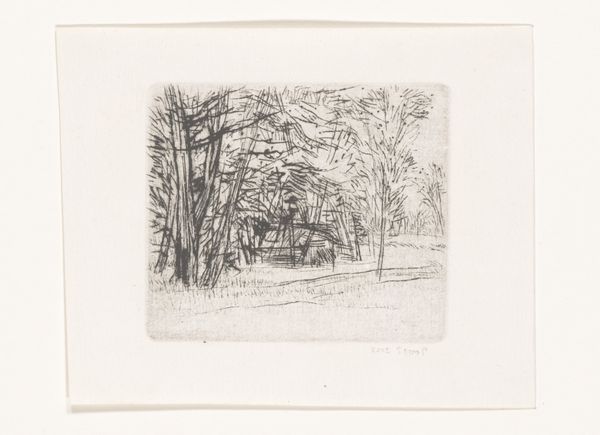
print, etching
#
ink drawing
# print
#
etching
#
landscape
#
etching
#
realism
Dimensions: 263 mm (height) x 227 mm (width) (bladmaal), 207 mm (height) x 184 mm (width) (plademaal)
Curator: Ah, here we have Carl Bloch’s “Vejen i Granskoven,” or “The Road in the Spruce Forest,” created in 1885. This piece is an etching. Editor: The intricate lines give it an almost dreamlike quality, a quiet moment captured in a dense, almost mystical wood. It really pulls you in. Curator: Precisely! Etchings allow for incredibly fine detail. I think Bloch uses this to create not just a scene, but a feeling. Look at the road itself; it represents a journey, a path forward… or perhaps into the unknown. Forests in Danish folklore often symbolize hidden aspects of the self, the subconscious. Editor: Absolutely, and in 19th-century art, we often see landscapes used as symbols of national identity, a connection to the land. Did Bloch create this piece in response to the changing social landscape of Denmark at the time? A need to connect to something permanent, untouched by industrialization? Curator: Possibly. The forest as a retreat from modern life, certainly. But Bloch was also deeply religious, and one cannot ignore the tradition of the forest as a place for contemplation and spiritual seeking. Note how the light filters through the trees; a touch of the divine perhaps? Editor: I'm fascinated by the texture. The different ways he represents foliage, using lines, density. The path almost disappears and is reclaimed by the nature around it. Maybe not only a place to seek something, but even something to overcome. Curator: It invites interpretation, for sure. The etching process, while laborious, also offered greater access and dissemination to the public than paintings did. So, he communicates directly and deeply. Editor: It’s really intriguing to consider Bloch, known largely for his religious paintings, exploring landscape. This adds another layer to our understanding of his artistic preoccupations, wouldn’t you say? Curator: Absolutely, it challenges us to broaden the contexts in which we view his work. This single piece can enrich how we understand not just him but landscape in this specific socio-cultural moment. Editor: Yes. These landscapes serve as more than pretty places and make me realize how an era influences the arts. Curator: It does invite you to wonder, doesn't it?
Comments
No comments
Be the first to comment and join the conversation on the ultimate creative platform.
